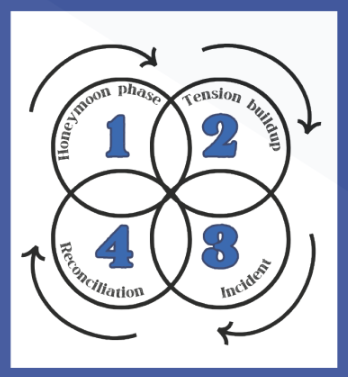Mental disorders hit home
One out of five people has a mental disorder.
Since our school has 1361 kids, that means 273 of us may have a mental disorder of some shape or form, even if you do not know it; some people are very good at hiding behind masks. These disorders can include (but are not limited to) depression, anxiety, autism, and bipolar disorder. Most people– and our school is no exception– are able to function well by themselves, but it is still important to learn about these mental disorders so we can better understand and help each other.
The most common condition here at our school is anxiety. “Most of the anxiety is reported to come from expectations students feel from school,” social worker Mr. Doug Dusthimer says. “The expectations can be either from their parents, themselves, teachers, peers or any combo thereof.” Mr. Dusthimer continues to say that these disorders include generalized anxiety, Obsessive-Compulsive Disorder (OCD), panic disorder, post-traumatic stress disorder (PTSD), and phobias. Each of these, though all are labeled anxiety disorders, are different, and so is each case.
Generalized anxiety is worry concerning regularities in life, like school or social situations. OCD is when one’s compulsions or obsessions become severe enough to interfere in the person’s life. People tend to think that they have OCD when they find themselves doing things over and over again (like tapping a pencil), or they must have things neat. This is not OCD unless it is severe enough to lose people jobs or mess with relationships. Phobias are a deep fear of a specific object or idea (such as spiders or clowns). Two others that are less common at our school are panic disorders and PTSD; random panic attacks, or ten or twenty-minute periods in which one experiences deep feelings of dread or worry, tend to characterize the panic disorder; and PTSD occurs after a person goes through a painful or frightening experience and suffers whenever he or she thinks about it or things associated with it.
People with depression are not just sad; they feel low every day of their lives, and it is difficult for them to be happy, even with medication. One cannot just “cheer up” with the disorder, which is why it is important to be there for them. According to Mr. Dusthimer, depression is the second most common mental disorder in our school. Harvard Health Publications says that the biological cause for the disorder is low levels of serotonin, which is a neurotransmitter that helps to regulate mood and to make one happy. If you know anyone with either of depression or anxiety, know that though it is hard to help them, just being there is beneficial.
Another common disorder is bipolar disorder. Bipolar is not as simple as just switching moods all over the place; it is when one’s moods shift from a “manic” phase to a “depressed” phase over an extended period of time; the manic phase can last up to three months, for example. People in the manic phase are generally overly energetic and willing to try difficult or dangerous activities, like jumping off things or engaging in reckless sex; people in the depression phase have trouble concentrating, feel sad and worried, and may consider suicide, which, sadly, is quite common: one in four bipolar people attempt suicide, and one out of ten succeed. Fortunately, the disorder is highly treatable with mood stabilizers, although it is unknown how some of them actually work in the brain.
The last condition to be discussed is Autism. According to the National Institute of Child Health, one in every 88 children has this disorder. As it is most known because of a charity adorned with colorful puzzle pieces called Autism Speaks, people may not know what it is or why it is important to support. According to the National Institute of Neurological Disorders and Stroke, Autism (formally known as Autism spectrum disorder, or ASD) is a spectrum of neurodevelopmental disorders. The disorder itself is characterized by social impairments and problems communicating, among other things.
Mr. Dusthimer puts it another way: “You have a hard time interpreting social cues.” Autistic people generally have a hard time making, maintaining, and emotionally connecting with friends. So, if you know anyone with Autism, reach out to them, and try to understand and help their difficulties. Some people with more severe levels of autism (it is a spectrum disorder because there is no one severity) actually have fears of social situations, and so do not have the required skills (for example, going out to buy groceries or calling the plumber if there is a problem) to live on their own. Others, those who do not have strong social fears, may be high-functioning enough to live by themselves) rather than Autism itself.
People with these symptoms may have high-functioning autism (It was formerly known as Asperger’s syndrome, however, according to Mr. Dusthimer, it was recently changed.) rather than Autism itself. People with Asperger’s can live on their own and make friends, however it may be harder for them to “read” or determine the moods of a social situation.
Research for autism as well as the previous disorders is very important to improving the lives of both the people with the disorder and the people around them. So, if one donates to any of these worthy research causes, where does it go? Or, in other words, how is research conducted? According to Mr. Dusthimer, in the case of a disorder like bipolar disorder, research begins by dividing people into three groups. For example, one group might receive no treatment, or a placebo medication, while one group might get therapy and some medication, and one group might just get the medication. The researchers then compare the effects and improvements between each group. The results help develop new procedures to aid or diagnose people with these disorders.
Mental disorders may be hard to see, but they are still as real as a broken leg or a paper cut; just because there is no pain does not mean it is not there. People have been researching these disorders since Wilhelm Wundt started the modern work in psychology in the late 1800s, and scientists continue to this day to find ways to help. We can all help just by being a friend.











